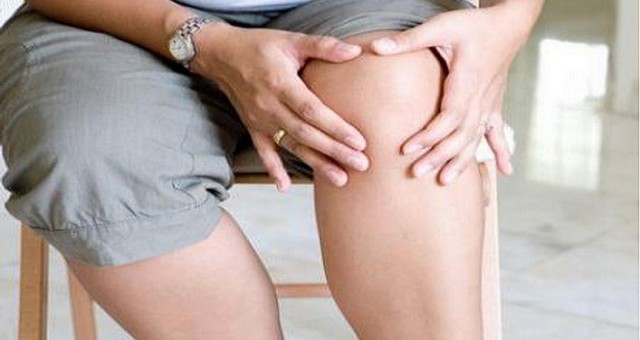Osteoarthritis (OA) is a type of arthritis that is also known as degenerative arthritis and wear-and-tear arthritis. The breakdown of cartilage occurs in almost any joints of the body. It is common in the weight-bearing joints of knees, backbone and hips and also affects the thumb, fingers, neck, and big toe. In most cases, it doesn’t affect other joints unless there’s an involvement of some past injury, underlying disorder of cartilage or excessive stress.
This joint disorder causes cartilage in joint to turn rigid and lose its elasticity which makes it more susceptible to damage. The cartilage may wear down in certain areas which decreases its ability to act as a shock absorber. As the cartilage becomes impaired, tendons and ligaments stretch and cause pain. When it aggravates, the bones rub against each other.
With the increasing age, the chances of developing disease increases. Most of the people who are above 60 years of age have osteoarthritis to some degree and the severity may vary. More women over the age of 50 have osteoarthritis than men. People in 20s and 30s can also have the disorder due to an underlying reason like joint injury or repetitive joint stress with overuse.
Here are the signs & symptoms, risk factors and causes, diagnosis and treatment of osteoarthritis.
Signs & Symptoms Of Osteoarthritis

The signs and symptoms of osteoarthritis mostly develop gradually. Here are the most common ones:
-
Pain and soreness in joint: You may experience hurt, inflammation or ache during or after the movement.
-
Tenderness: Your joint will feel tender or sense of discomfort as light pressure is applied on the affected area with fingers.
-
Stiffness: It is mostly noticeable as soon as you wake up early morning or after periods of rest or inactivity.
-
Bone spurs: You may have bone enlargements in middle and end joints of the affected area. These extra bits of bones may feel like hard lumps.
-
Loss of flexibility: You might find yourself unable to move your joint through its complete range of motion.
-
Grating sensation: You might feel a grating sensation while using the joint.
As the problem aggravates and goes into advanced stage, pain and swelling in the joint and surrounding area occurs.
Risk Factors & Causes Of OA

The many risk factors and causes of osteoarthritis include:
*Obesity
The risk of osteoarthritis of knee, spine and hip increases with the problem of obesity. It’s important to maintain ideal weight or loss excess weight to prevent this disorder and decrease the rate of progression once it occurs.
*Heredity
In some people, an inherited defect occurs in one of the genes that are responsible for cartilage formation. This leads to defective cartilage, causing rapid deterioration of joints. People who are born with abnormality in joints are at a higher risk of developing osteoarthritis. Moreover, people who are born with spine abnormalities (like scoliosis or curvature of spine) are more likely to develop this disorder.
*Joint Overuse
The overuse of some joints may increase risk of having osteoarthritis. For instance, people who are into jobs that require repeated knee bending are more likely to develop osteoarthritis of the knee.
*Injuries
An injury could further the chances of development of OA. For instance, athletes getting knee-related injuries are more likely to develop osteoarthritis of the knee. Moreover, people having severe back injury may be susceptible to osteoarthritis of spine. And people having broken bone near a joint are prone to developing osteoarthritis in that joint.
*Other Disorders
Those having the second most common type of arthritis rheumatoid arthritis have high chances of developing osteoarthritis. Moreover, some rare conditions like iron overload or excess growth hormone are more likely to have OA.
Diagnosis Of Degenerative Arthritis

Osteoarthritis can be diagnosed on the basis of a combination of these factors:
-
The description of signs and symptoms
-
Location and pattern of pain
-
Physical examination to closely examine affected joint for swelling, range of motion and tenderness of joint
-
Use of X-rays in order to confirm diagnosis and to ensure that you do not have any other type of arthritis. They tell you about the amount of joint damage that has taken place.
-
An MRI could be required for taking a better look at the joint and surrounding tissues if X-ray results do not help much in clearly examining arthritis or other condition.
-
Blood tests do not usually help in identifying OA. In certain cases, blood tests are performed for determining if you have a different type of arthritis such as rheumatoid arthritis.
-
Joint fluid analysis: If fluid gets accumulated in your joints, then doctor might remove some fluid (called aspiration) for examination under a microscope so as to rule out other disorders.
How Can It Be Managed & Treated?

Osteoarthritis symptoms can be reduced effectively by making changes in lifestyle, taking physical and other therapies. It can further be treated using certain medications or by undergoing surgery. Exercising to achieve healthy weight and strengthen muscles is an important way of managing OA. Hot and cold compresses to painful joint, injecting medications (lubrication and cortisone) into joint and using supportive devices like crutches or canes help in relieving pain due to OA.
Tai chi and yoga poses are also effective in reducing pain and improving movement. Medications like duloxetine (cymbalta), acetaminophen and nonsteroidal anti-inflammatory drugs (NSAIDs) relieve pain and reduce inflammation. Natural treatments of OA include acupuncture, topical capsaicin and avocado-soybean unsaponifiables. Surgery could be helpful to relieve pain, replace joint, realign bones, when other treatment options do not work.
The type of treatment to be applied depends on various factors such as age, occupation, medical history, location of OA, overall health, activities and how severe the condition is.

